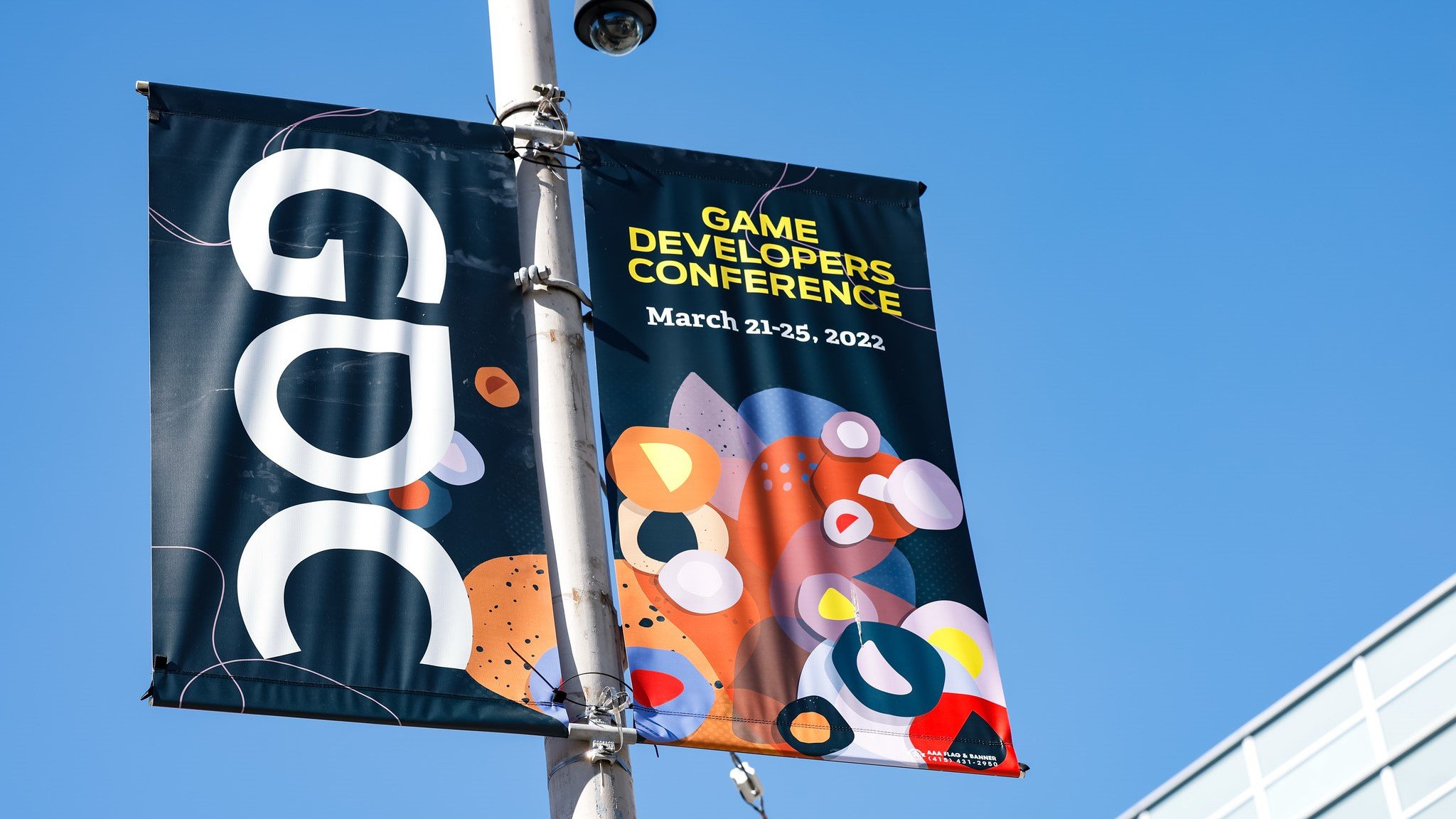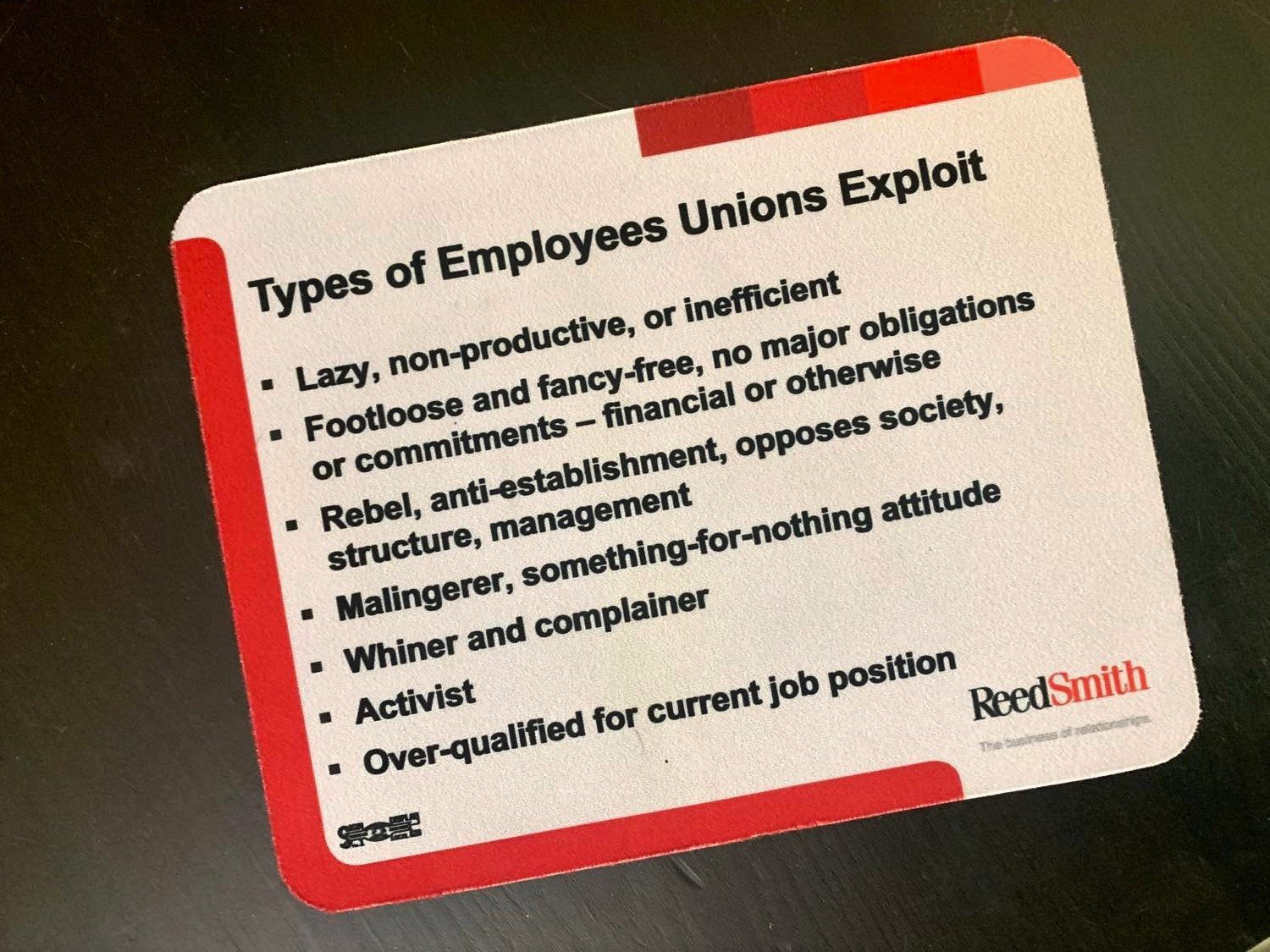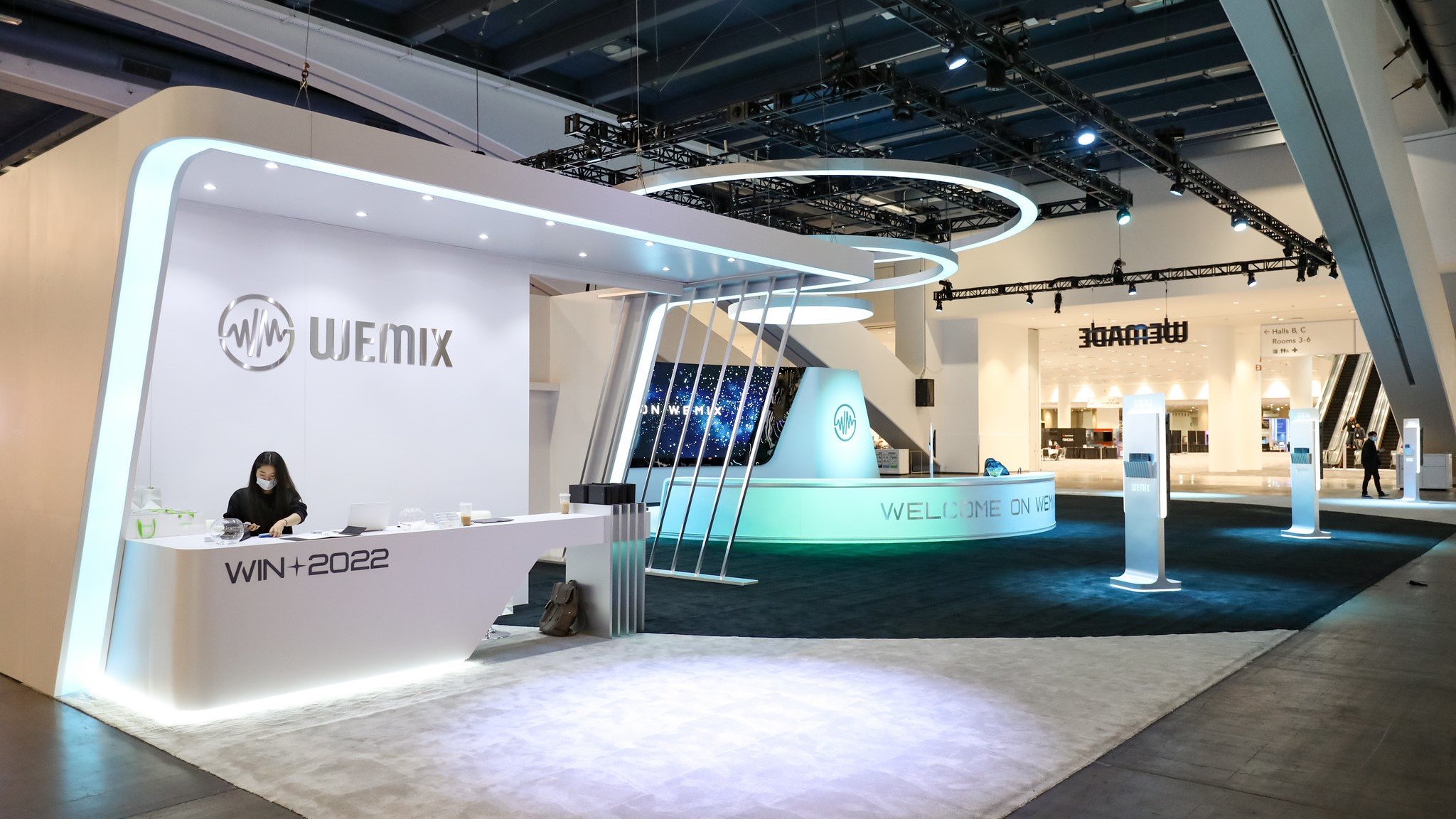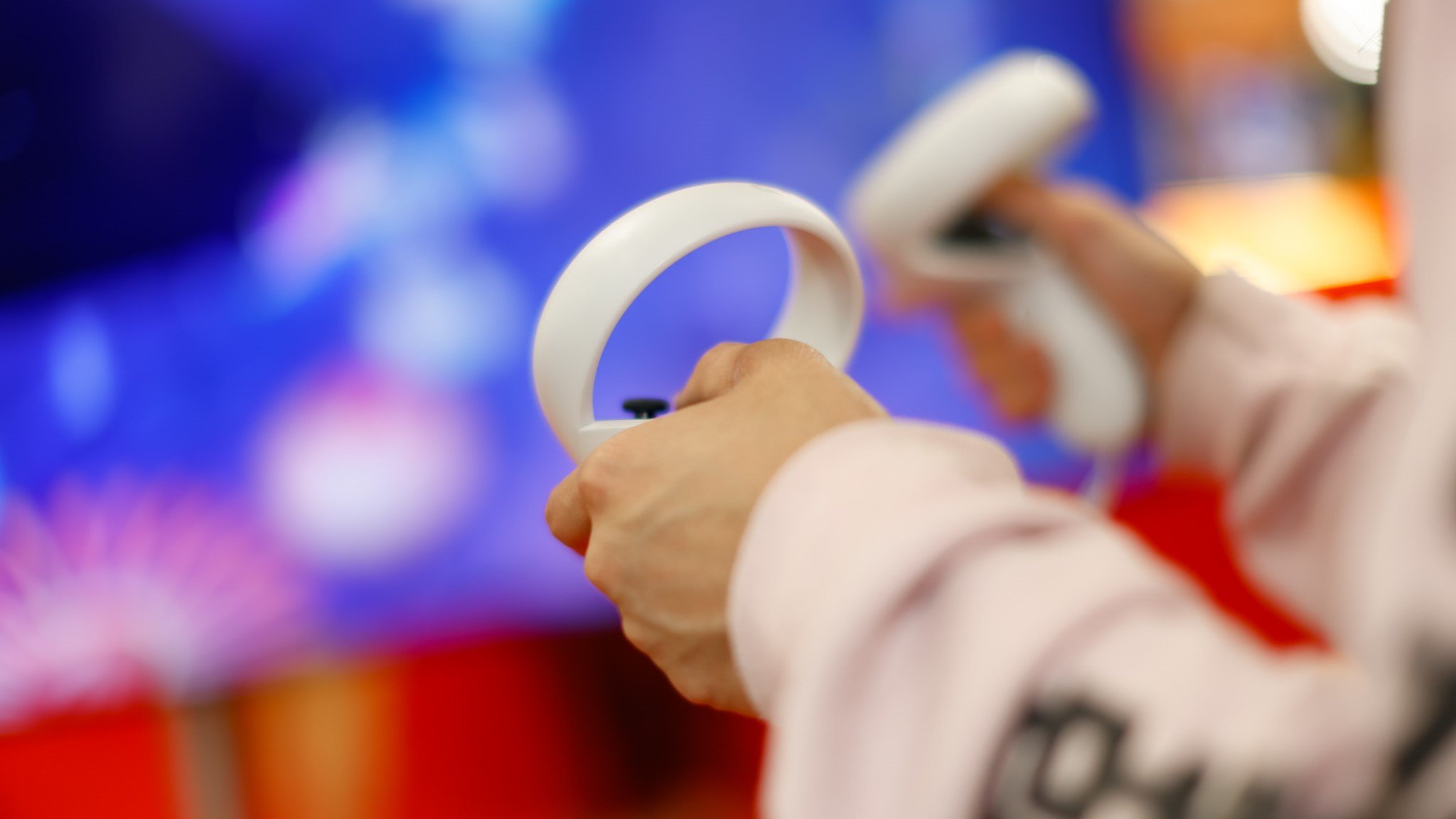GDC 2022 roundup: Unions, NFTs, and VR all in one place
While it was smaller this year, GDC still set the tone for the rest of the year.

GDC 2020 was one of the first major industry events that were affected by the approaching pandemic. So it makes sense that three years later, it would be one of the first to welcome games industry people back to live events.
The conference, which typically features five days of talks, networking opportunities, and expo floor booths, was more subdued this year. There were 12,000 people registered in-person, down from 29,000 in 2019, and around 5,000 opted to be virtual-only. The vibe around the conference was also strange, with many people noting it was the first large-scale event they had been to since lockdown began. It was a week of adjustments and compromise, with people trying to figure out how to keep demo areas and VR setups sanitized and constantly taking their masks off and putting them back on. GDC itself had strict rules about vaccinations and masking, but that didn't spread to the rest of San Francisco.
Even with the changes, GDC retained the same impact it always does. While it's not an event for gamers, it helps set the tone for the rest of the year and defines trends that both professionals and fans alike can and should pay attention to. VR and related tech continued to have a huge presence, but newcomers like blockchain games and unions showed where people's attention might go for the rest of 2022.
Labor issues and the four-day workweek

At GDC 2019, arguably the most important topic of conversation had to do with unionizing, which kicked off one year earlier. Since then, there have been so many decentralized discussions about labor issues, capping off this year with the formation of two official video game unions in North America: one at Vodeo and another for Raven Software QA (although the latter hasn't been formally recognized yet).
Labor issues are a contentious topic in just about any industry, but it's been on the top of many people's minds in video games thanks to a long list of stories that came out during the pandemic.
Labor issues are a contentious topic in just about any industry, but it's been on the top of many people's minds in video games thanks to a long list of stories that came out during the pandemic from the likes of Ubisoft, Bungie, and Activision Blizzard. Just the week prior, YouTube channel People Make Games published a video concerning toxic workplace allegations at three indie studios: Mountain, Fullbright, and Funomena. More universal discussions about the rights of contract workers and the four-day workweek have been ongoing in multiple industries, and so of course video games wanted to weigh in.
So at GDC 2022, labor issues were once again on the docket. One talk with several indie studios on Monday discussed the challenges of implementing a four-day workweek. Tanya X. Short, founder of Kitfox Games, talked about trying it out last year and sticking with it because it seemed "almost impossible" to go back to five days. Not only do fewer hours throughout the week reduce crunch, a common problem throughout the industry, but also helps people take care of their health during the pandemic.
"We had been enduring the pandemic that long. I really needed people to not burn out and to stay on after launch and come with 100% of their health," Short said. "It seemed like the best, or at least a temporary solution. And we thought, 'Well, why not continue?'"
Get the Windows Central Newsletter
All the latest news, reviews, and guides for Windows and Xbox diehards.
Meanwhile, the Communications Workers of America (CWA) had a bright presence on the expo hall floor in the latter half of the week with a sizeable red booth. It handed out merch (including a mousepad that listed bullet points from a Reed Smith presentation slide that called out the "types of employees unions exploit"), and featured an arcade game called Super Anti-Union Campaign Simulator. The CWA has been heavily involved in the Activision Blizzard employee response and the formation of the Raven Software QA union. Since union talks have been present at GDC since at least 2018, it was quite a change to see an organization like the CWA get the word out to developers on the floor, especially to counteract one of the other more visible presences there that week.
NFTs and blockchain

One of the most striking images on the expo hall floor was the WEMIX booth, an absolutely giant, gleaming white structure with a large open, carpeted space in the center. The booth was run by Wemade, a South Korean game studio and one of the largest GDC sponsors this year, along with Meta and Unity. WEMIX is blockchain platform that looks to help other developers turn their titles into blockchain games that use WEMIX's currency. Booth workers wandered outside GDC and in the halls handing out flyers asking you to come to their talks to win a prize.
But all of this I learned later while trying to research what WEMIX actually was. While the booth was set aside for meetings, there was almost nobody in it the multiple times I walked by. Like a lot of blockchain and crypto technology, the marketing is obtuse and vague, with terms thrown around like "transparency" and "tokenomics" without much context.
Most people I talked to had a mix of opinions about the wealth of blockchain, NFT, and Web3 setups on the floor.
The issue with the crypto presence at GDC was not that it was unwarranted, despite how a recent GDC State of the Industry report noted how 70% of developers were not interested in NFTs. Huge companies like Ubisoft have set up NFT platforms and other organizations like GSC Game World and Team17 dabbled in it before backing down following criticism. It's a contentious topic, but one that many video game studios are interested in exploring.
Most people I talked to about it were equally confused by the WEMIX booth and had a mix of opinions about the wealth of blockchain, NFT, and Web3 setups on the floor. Some said they respected the technology but hated how it was being used while others hated its presence entirely. The only people I met who were all in on it were working directly with a blockchain games platform. Either way, the expo hall floor was full of booths discussing blockchain tech, play-to-earn, and the metaverse (which doesn't have to be related to this industry but seems to anyway with projects like The Sandbox). Users couldn't escape it outside the Moscone Center either, with a truck featuring an ad for WAX.io driving around the conference.
While there were only four talks about blockchain, Web3, and related topics on the agenda (not including a couple dozen sponsored sessions), some still managed to draw some controversy. One talk, titled "Blockchain, NFTS, Play-To-Earn … Is It Real or a Farce?" was the only one to have a crypto skeptic on the panel. Another, called "What the Fungible? A Developer Discussion on NFTs," seemed to poke fun at criticisms against the tech in its description. "Are we burning down the planet? Enabling perennial pyramid schemes? Dividing players into the haves & have-nots? Are we burning down the planet?"
Regardless of whether you're interested in this new tech or not, its presence at GDC this year shows that it's a topic at least some want to learn more about. Either that or the people in that business just have more money than everybody else to rent out the space.
VR and gaming tech continues to branch out

At my first GDC in 2016, I was struck by how much VR technology was on the expo hall floor. Six years later, none of the specific products I saw are viable for consumers. However, that isn't to say I don't see it reflected in some way. For example, I noted a number of booths showing off hand tracking prototypes, which is now mainstream on the Quest 2.
Even though VR is more consumer-ready than ever, GDC was still filled with experimental or niche tech that looked to expand on the idea of what VR could be, and how we could move it forward. Brelyon showed off its VR display that didn't require a headset, while Patchworld: Sound of the Metaverse in the SwissGames section allowed users to essentially make music videos in VR. Hand tracking might've been the emerging tech of 2016, but Finger Gun VR allowed users to use the tech to make actual finger guns and use them to shoot targets in VR. Elsewhere, big names like Owlchemy and Schell presented talks about accessibility in VR and others talked about VR design for outside the gaming world.
The conference isn't known for announcements and high-profile demonstrations (with Stadia in 2019 being the exception), but reportedly developers were able to try out PS VR2 behind closed doors, with one saying "the world just feels different." Some were not present on the show floor, but were set up in nearby venues to demo either upcoming headsets or new games. As a side note, demos weren't common this year.
While not necessarily related to VR, the show floor, as usual, was filled with other flashy products. One of the highlights was OptiTrack, which was marketing its motion-capture tech using real-time performers. Zwift, a gamified riding app, was on hand to discuss how the metaverse shouldn't be limited to just VR headsets.
There were a few motion capture companies, including @optitrack, on the expo floor at #GDC2022. I find these quite fascinating and it's wonderful how the movements transfer.#motioncapture #volumetric #video #gamedesign #animation #robotics pic.twitter.com/HcuWcc3DbNThere were a few motion capture companies, including @optitrack, on the expo floor at #GDC2022. I find these quite fascinating and it's wonderful how the movements transfer.#motioncapture #volumetric #video #gamedesign #animation #robotics pic.twitter.com/HcuWcc3DbN— Hasko7 💗 (@sonyahaskins) March 25, 2022March 25, 2022
As VR continues to be the emerging tech of the video games industry, GDC will surely continue to see setups just like this over the next few years.
Games about the apocalypse and what comes after
Unsurprising to just about everybody, it's been quite a couple of years. With a long-running COVID-19 pandemic, heated political elections, and now a war, the idea of the apocalypse is on a lot of people's minds. That has resulted in a lot of games that are either about the end of the world or what comes after, and they vary wildly in tone.
Over at the IGF booth, I tried out the game Midnight Protocol, which depicts a cyberpunk world decades in the future that isn't too different from our own post-capitalist world. Other games showed off more grim depictions of the end times. However, there were also a lot of titles that went in the opposite direction. Kimchi Corp.'s Soar: Pillars of Tasneem gives the player an expansive third-person world they can explore either as a human or as a dragon. It depicts a world post-apocalypse, but it's pleasant, green, and serene. In another called Magnum Hopeus from Bloom Digital, the future world has its own problems, but ones that feel more approachable than ours. There's something refreshing about figuring out how to deal with whale independence rather than any real issues.
A couple of years ago, I wrote about how more mainstream titles were beginning to discuss the effects of capitalism to varying degrees of success. We're still very much in that trend, but with many feeling like the world is coming to an end, it makes sense that developers are tackling their feelings on the subject as well.
Bottom line
With many of us striving for a return to normalcy, the return of GDC feels like more evidence that the video game industry is returning to normal. While we are catching up on the number of delays we've seen since the pandemic, it's a reminder that things are still far from over. However, people continue to work and the industry continues to move forward. Beyond all the technological stuff and debates, attendees were overall pleased to be back to in-person events, whether it was for networking or just seeing coworkers they've never met. It felt like a return, even when most people were wearing masks.

Carli is the Gaming Editor and Copy Chief across Windows Central, Android Central, and iMore. Her last name also will remind you of a dinosaur. Follow her on Twitter or email her at carli.velocci@futurenet.com.
